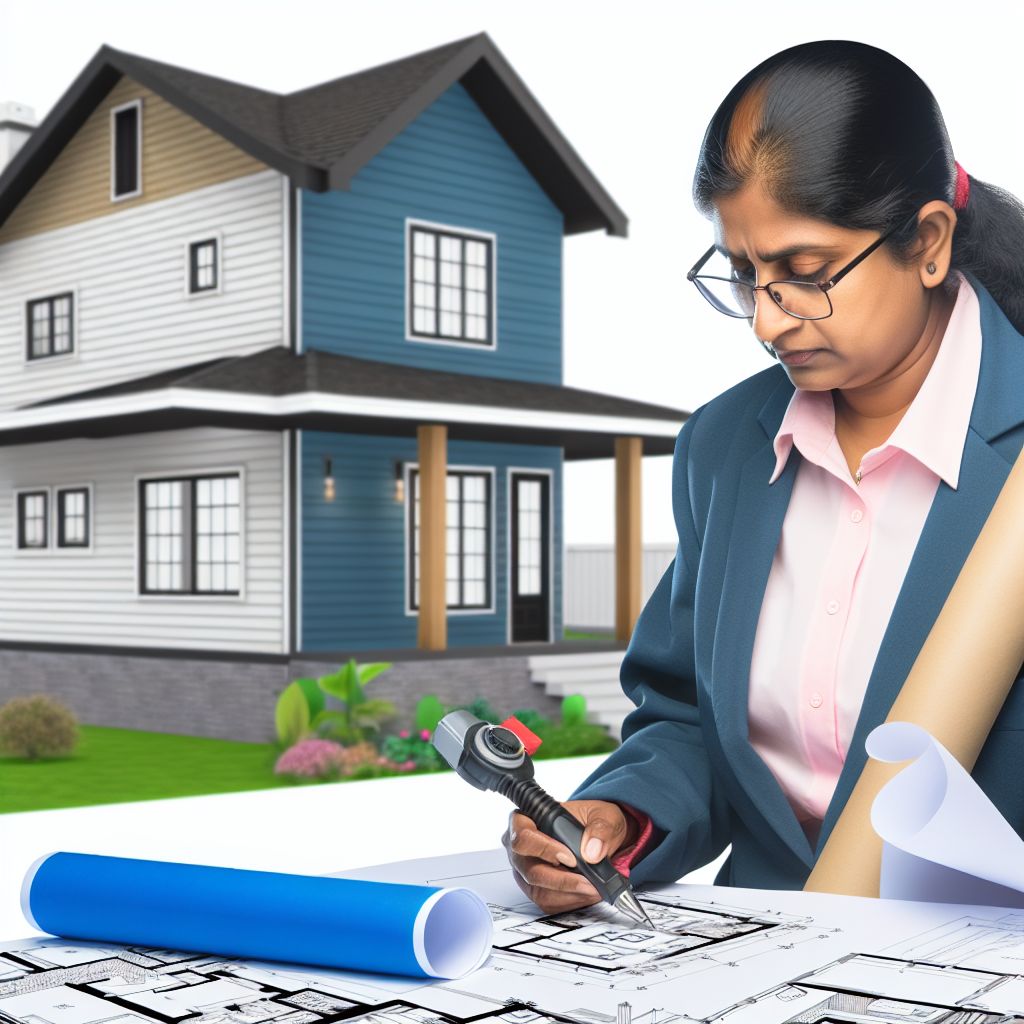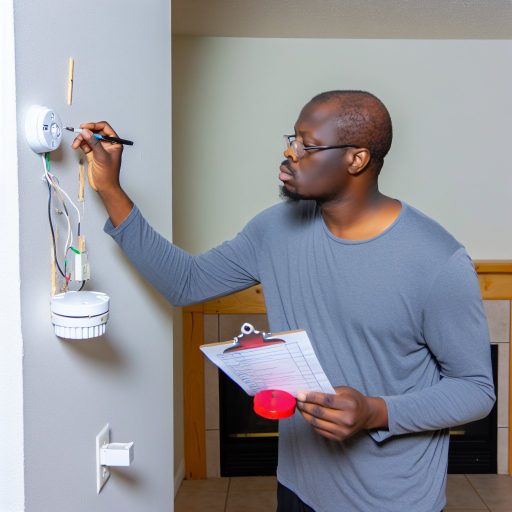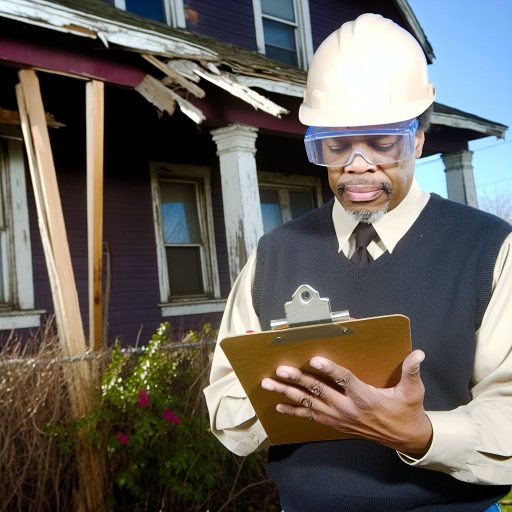Understanding the Importance of Property Inspections for Owners
Property inspections play a crucial role in property ownership.
They provide insights into the condition of a property.
Moreover, inspections help identify potential problems early on.
This proactive approach can save owners money over time.
For instance, minor issues can be addressed before they escalate.
Ensuring Safety and Compliance
Safety is a primary concern for all property owners.
Regular inspections help ensure compliance with safety regulations.
This includes checking for hazards such as mold or structural damage.
Additionally, compliance with local building codes is essential.
Failing to meet these codes can lead to hefty fines.
Enhancing Property Value
Property inspections can also enhance overall value.
A well-maintained property is more appealing to buyers.
When considering resale, an inspection report is beneficial.
It demonstrates to buyers that the property has been cared for.
Consequently, this can lead to a higher selling price.
Planning for Maintenance
Inspections create a roadmap for future maintenance.
By identifying issues early, owners can budget for repairs.
This planned approach reduces unexpected expenses.
Moreover, it helps extend the life of key property components.
For example, understanding the state of plumbing can guide renovations.
Increasing Tenant Satisfaction
For rental property owners, inspections benefit tenant satisfaction.
A property in good condition attracts and retains tenants.
Regular inspections show tenants that their comfort matters.
It also supports a positive landlord-tenant relationship.
Ultimately, satisfied tenants lead to stable rental income.
Preparing for a Property Inspection: A Checklist
Begin by identifying the purpose of the inspection.
Understanding this allows for focused preparation.
Next, gather essential documents related to the property.
This includes maintenance records, warranties, and inspection reports.
Make sure to clean the property thoroughly.
A clean space creates a positive impression.
Inspect your property’s exterior first.
Check for any visible damage or wear.
Pay close attention to the roof and gutters.
Next, examine the windows and doors for leaks.
Do not forget to inspect the foundation for cracks.
Now, proceed to the interior rooms.
Check for signs of water damage in ceilings and walls.
Test all major appliances to ensure they work properly.
Remember to check the heating and cooling systems.
Evaluate the plumbing fixtures for leaks.
Pay attention to the electrical systems as well.
Check all electrical outlets and light fixtures meticulously.
As you prepare, note any repairs needed.
Make a list to address these after the inspection.
Finally, prepare any questions for the inspector.
This will help you gain valuable insights during the assessment.
Scheduling the Right Time for an Inspection
Assessing Availability
First, determine the best time for your inspection.
Consider your schedule and availability first.
Next, assess the tenant’s availability.
Communication is key in this step.
Ask for a suitable timeframe from everyone involved.
Choosing the Right Season
Weather can significantly affect inspections.
For example, spring and fall are ideal for most properties.
In contrast, winter can often hide issues.
Consider peak seasons for rental properties as well.
Schedule inspections when potential issues are easier to see.
Coordinating with Professionals
If hiring inspectors, coordinate their schedules.
Request a list of available dates from the inspector.
Ensure the timing aligns with your availability too.
Additionally, give yourself a buffer for unexpected delays.
Preparing for the Inspection Day
Inspectors need access to all property areas.
Notify any tenants well in advance about the inspection.
Provide clear instructions on what to expect.
This will help reduce any confusion on the day of inspection.
As a result, the inspection process can run smoothly.
Delve into the Subject: Common Rental Property Repairs and How to Handle Them
Identifying Key Areas to Inspect: Interior vs. Exterior
Conducting property inspections requires careful attention to both interior and exterior areas.
Understanding what to inspect ensures thorough evaluation of the property.
Start with the interior spaces, focusing on each room methodically.
Evaluate the kitchen, checking appliances, plumbing, and cabinets.
Then, inspect the living room for structural issues and overall condition.
Next, examine bedrooms for signs of wear and address electrical outlets.
Don’t forget to check bathrooms for water damage or mold issues.
Finally, look for smoke detectors and verify their functionality.
Shifting Focus to the Exterior
After completing interior inspections, move to the property’s exterior.
First, assess the foundation and look for cracks or settling.
Next, inspect the roof for shingles and potential leaks.
Pay attention to gutters and downspouts, cleaning them as needed.
Evaluate windows and doors for sealing and any signs of damage.
Take time to inspect landscaping for proper drainage and maintenance.
Additionally, check fences and gates for security and stability.
Documentation and Reporting
Documenting findings during the inspection is critical.
Use photos to capture specific issues for future reference.
After completing the inspection, compile a comprehensive report.
Include recommendations for repairs and maintenance timelines.
This step ensures that all identified problems are addressed effectively.
By following these steps, property owners maintain their investments efficiently.
You Might Also Like: Eviction Laws and Legal Steps for Property Owners
Common Issues Found During Property Inspections
Structural Problems
Property inspections often reveal structural issues in buildings.
These may include cracked foundations or settling problems.
Addressing these issues can prevent further damage and safety hazards.
Roofing Concerns
Inspectors frequently identify roofing problems during evaluations.
Common issues include missing shingles and leaks.
Unrepaired roofing can lead to extensive water damage over time.
Electrical System Deficiencies
Electrical systems are commonly scrutinized during property inspections.
Outdated wiring and improper grounding can pose safety risks.
Inspectors ensure systems meet current safety standards.
Plumbing Issues
Plumbing problems often come to light during inspections.
Leaks, corroded pipes, and poor water pressure are frequent findings.
Timely repairs are crucial to avoid costly water damage.
HVAC System Performance
Heating, ventilation, and air conditioning systems must function properly.
Inspectors evaluate system efficiency and maintenance history.
Neglecting HVAC issues can lead to higher energy bills.
Safety Hazards
Safety hazards can pose significant risks in properties.
Items such as loose handrails and inadequate smoke detectors are common.
Addressing these hazards ensures a safe living environment.
Environmental Concerns
In some inspections, environmental hazards may be present.
Common issues include mold, asbestos, and lead paint.
Identifying these concerns is crucial for occupant health.
Explore Further: Property Inspections for Property Tax Assessments

Tools and Equipment Needed for Effective Inspections
Essential Safety Gear
Always prioritize safety during property inspections.
Wear gloves to protect your hands from contaminants.
Use safety goggles to shield your eyes from debris.
A hard hat is important in areas where falling objects may pose a risk.
Steel-toed boots will protect your feet from heavy items.
Basic Inspection Tools
A flashlight is essential for inspecting dark corners and basements.
Use a tape measure to check dimensions accurately.
A notepad helps document findings during the inspection.
Utilize a camera to take pictures for your records.
Advanced Equipment
A moisture meter detects issues related to dampness.
Use a thermal imaging camera to find hidden leaks.
An electrical tester measures the safety of outlets and wires.
Use a ladder to safely reach high areas during inspections.
Specialized Tools
A drone can offer aerial views of large properties.
Infrared thermometers help check for HVAC system inefficiencies.
Gas detectors are crucial for identifying hazardous leaks.
A sewer camera can reveal underground plumbing issues.
Organizational Tools
Mobile apps can streamline your inspection process.
Consider a checklist to ensure comprehensive assessments.
Keep organized files of reports for future reference.
A scheduling tool can help manage inspections efficiently.
Explore Further: Property Inspections for Short-Term Rentals
Documenting Inspection Findings: Best Practices
Importance of Documentation
Documenting inspection findings serves as essential record-keeping.
It provides clarity on the property’s condition for future reference.
Moreover, it aids in making informed decisions about maintenance.
Organizing Findings Effectively
Start by categorizing your findings systematically.
Use categories such as structural, electrical, plumbing, and HVAC.
This organization ensures easier access to specific information.
Utilizing Digital Tools
Consider using apps or software designed for property inspections.
These tools facilitate efficient data entry and documentation.
Additionally, digital formats allow for easy sharing and collaboration.
Including Photographic Evidence
Take photographs of any issues you identify during the inspection.
Images provide visual evidence and enhance reporting accuracy.
Label each picture with relevant details for context.
Writing Clear Descriptions
Provide concise descriptions for each finding.
Use clear language to convey the condition and implications.
Avoid jargon to make the documentation accessible to all stakeholders.
Acknowledging Severity Levels
Assess the severity of each issue during your inspection.
Classify findings into categories such as minor, moderate, or major.
This classification helps prioritize action items effectively.
Creating a Comprehensive Report
Compile all your findings into a detailed report.
Include an overview of the inspection process and your conclusions.
Additionally, suggest next steps for any necessary repairs or follow-ups.
Regular Updates and Revisions
Update your documentation regularly based on new findings.
Revisions allow for accurate tracking of property conditions over time.
Moreover, it ensures that necessary maintenance is promptly addressed.
Post-Inspection Steps: Addressing and Prioritizing Repairs
Assessing the Inspection Report
Start by thoroughly reviewing the inspection report.
Identify any critical safety concerns first.
Next, examine areas requiring immediate attention.
List all recommended repairs in order of urgency.
Pay special attention to structural issues and plumbing problems.
Creating a Repair Plan
Develop a comprehensive plan for addressing repairs.
Consider the budget you have available for each project.
Outline a timeline for completing the repairs.
Moreover, prioritize repairs based on their severity.
Consulting with Professionals
Engage with qualified contractors for specialized repairs.
Get multiple quotes to understand the market rates.
Evaluate contractor reviews and past work.
Ensure the contractors hold the necessary licenses and insurance.
Performing DIY Repairs
Identify simple repairs that you can handle yourself.
Tasks like painting or replacing fixtures are often manageable.
Gather the right tools and materials before starting.
Follow safety guidelines to prevent accidents.
Monitoring Progress
Track the progress of repairs consistently.
Document each step to maintain a record.
Regularly communicate with contractors to stay informed.
Adjust the plan as necessary based on findings or setbacks.
Final Inspection and Review
Once repairs are completed, conduct a final inspection.
Check that all work meets your expectations and standards.
Ensure all safety concerns have been properly addressed.
Lastly, consider maintaining a long-term inspection schedule.




